If you thought orchids were only for supermarkets, with their roots pressed against their plastic tubs, think again. I was once surprised to learn about our wild orchids, before I knew it, I was completely fascinated by their unique appearances, surprising strategies, and even the occasional suspicious scent! As well as the fact they can be found growing in London.
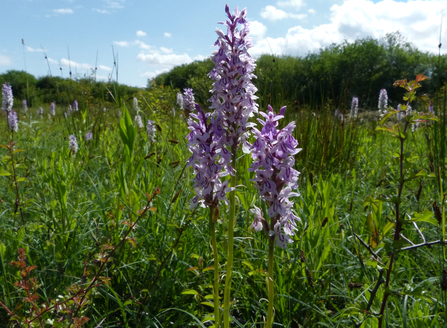
Orchids at Yeading Brook Meadows credit Val Borrell
Unlike the typical wildflowers you see growing, orchids seem otherworldly. Their unique shapes and vibrant colours hint at a more complex story than the usual pollination process, and you'd be right! These botanical beauties boast a fascinating secret: a symbiotic relationship with fungi.
Imagine an orchid seed, minuscule and adrift on the wind. It needs to find the perfect spot with the right amount of light, moisture, and warmth (just like flat hunting in London!). But hold on, there's a twist! To thrive, this tiny seed also needs to form a symbiotic relationship with fungi in the soil. A symbiotic relationship is a scientific way of saying two different living things team up to get what they need. It's like a friendship where both parties benefit in some way.
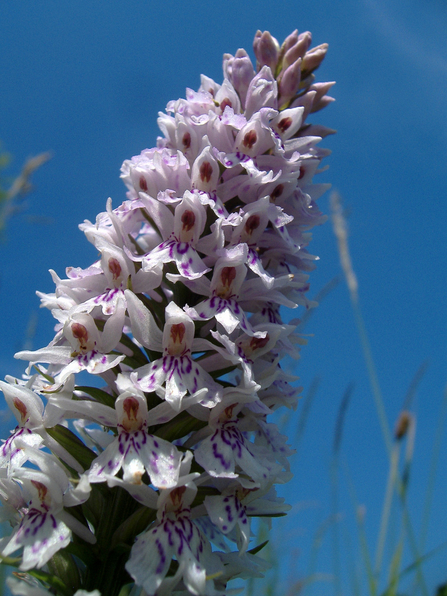
The fungus gathers nutrients from the soil, providing the orchid seed with the energy it needs. This helps the seed grow into a sprout called a protocorm, which eventually becomes a full-fledged orchid plant. Most protocorms will develop leaves and can photosynthesise to create their food. However, some orchids never grow leaves with chlorophyll (the green pigment in leaves needed for photosynthesis) so remain completely dependent on their fungus friends for nourishment.
Orchids are truly spectacular when it comes to appearance, they come in a huge variety of shapes, with some sneaky species mastering mimicry and bloom in weird and wonderful ways! Others emit incredible aromas, but beware that the incredible variety also includes a few... well, let's just say less-than-enchanting scents to us, but will be powerfully attractive to insects that help pollinate some of them.
One of the first orchids and a sign orchid season is on its way is the arrival of the aptly named early purple orchid.
Early purple orchid credit Mike Waller
This orchid appears from April and is around until June. Found in habitats with non-acidic soils like hedgerows and open grassland, the early purple orchid can bloom up to 50 dark purple flowers which grow in a dense cone-shaped cluster on a tall spike. Just be aware – once fertilised, the orchid develops a strong unpleasant smell!
Bee orchid at Saltbox Hill credit Mike Waller
The bee orchid is one of my favourite orchids as this species has mastered the art of mimicry. Not only does this orchid look like a certain female bee species, but it also emits the same scent as bees! Luring unsuspecting male bee species into pseudocopulation – the male attempts to mate with the orchid but alas the effort is wasted. However, most of the bee orchids in Britain are self-pollinating as the specific bee that the bee orchid is mimicking does not live here!
Fly orchid
Photo credit: Philip Precey
Similar to this the fly orchid deploys the same deceptive tactics although the name suggests otherwise, this orchid attracts digger wasps as they release a scent which mimics a female wasp's pheromones!
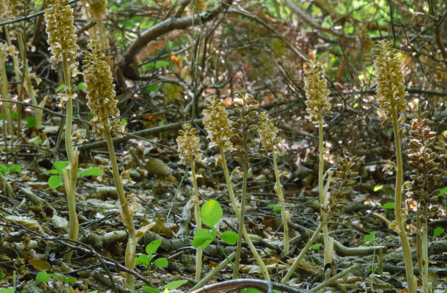
Bird’s-nest orchid
Photo credit: Les Binns
Now although this orchid may look a bit sickly, the bird’s-nest orchid does not photosynthesise but instead grows as a parasite on tree roots, hence its brownish-yellow flowers. Wondering why the name birds-nest? Well this leafless plant has a tangle of roots, akin to our winged friends abodes!
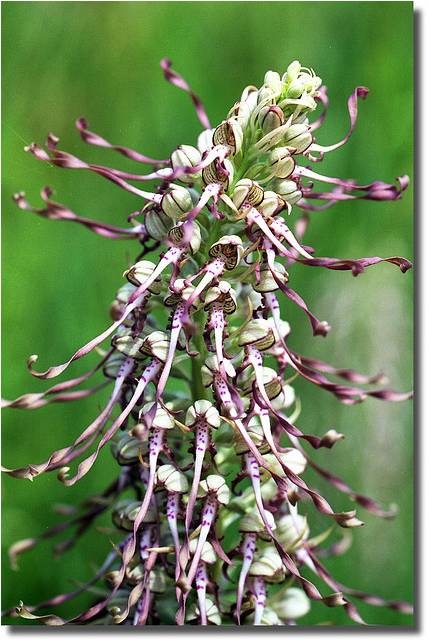
Photo credit: Mathew Frith
It saddens me to say I have yet to see a lizard orchid in person, I have had to observe and admire digitally! This rare, orchid certainly lives up to its name, the flowers have petals and sepals that create the head of a lizard. Whilst the lips look like its legs and long twisting tail. However, I will be avoiding having a sniff of this reptile mimic as it smells of goats (I might have a small sniff just to understand just how goat-y it smells!)
It is not surprising that many others and I have not come across this elusive orchid. As sited in a 2013 edition of the Wild London
"Research into 72 lizard orchid populations since the 1940s showed that 40 were picked or dug-up by collectors, six died out through habitat disturbance, four were built upon, three became overgrown. two were mown, one "was trampled and/or grazed by horses and just 16 survived. No doubt the fate of the other 118 populations for which records of their fate were absent. As nationally rare and vulnerable to loss, lizard orchid is listed as a protected species on Schedule 8 of the Wildlife & Countryside Act 1981. It's also listed on internationally designated Special Areas of Conservation for certain habitat types. It was therefore surprising that a couple of spikes were spotted in 2006 by a bus stop In west London, which have blossomed each year since. Quite how the lizard orchid managed to take root in this unremarkable location is still unknown. Lizard orchid is at its northern-most limit in southern England, and it has been suggested that it will begin to move further across the country as the climate changes. The west London orchid is either a bizarre one-off interloper, or at the vanguard of an expansion."
-Mathew Frith, Flora Forever Changes, Wild London, 2013
Two known sites of the Lizard orchid are in quite unusual spots, one is next to a bus stop in Syon west London and Chelsfield near Orpington.
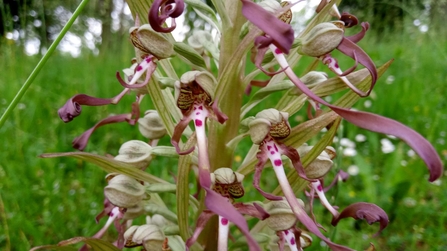
Lizard orchid
Photo credit: Mathew Frith
Now I have divulged just a few of 52 species you can find in Britain, there are some certain spots to head to in London should you want to go spotting orchids!
Hutchinsons Bank, a large chalk downland area, and home to plenty of species of orchid such as the pyramidal orchid and common spotted-orchid as well as bee orchid that can be found in the southern paddocks. It is also a hub for butterfly enthusiasts, so you are sure to have a magical time amongst the rare plants and invertebrates.
Another reserve to visit is Saltbox Hill, this reserve is a Site of Special Scientific Interest and is said to of inspired Charles Darwin and his evolutionary theory since he lived nearby! This habitat is home to rare wildflowers and at least 32 species of butterfly, as well as bee orchid!
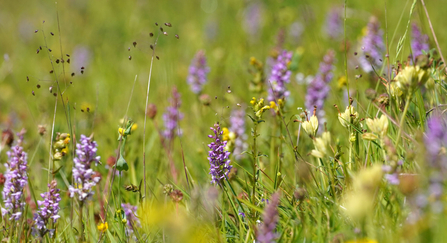
Orchids in a meadow © Jim Higham
Here are some more brilliant reserves and what wild orchids you may spot:
twayblade, broadleaved helleborine, greater butterfly orchid, common-spotted orchid, early purple orchid
broad-leaved helleborine
Downe Bank (Kent Wildlife Trust site in London)
common fragrant orchid, pyramidal orchid, bee orchid, common spotted orchid
So whether you already knew about our wild orchids, or have been completely floored by this revelation, I hope you will be keeping an eye out for this incredible plants, and head out into nature to become an orchid observer!

